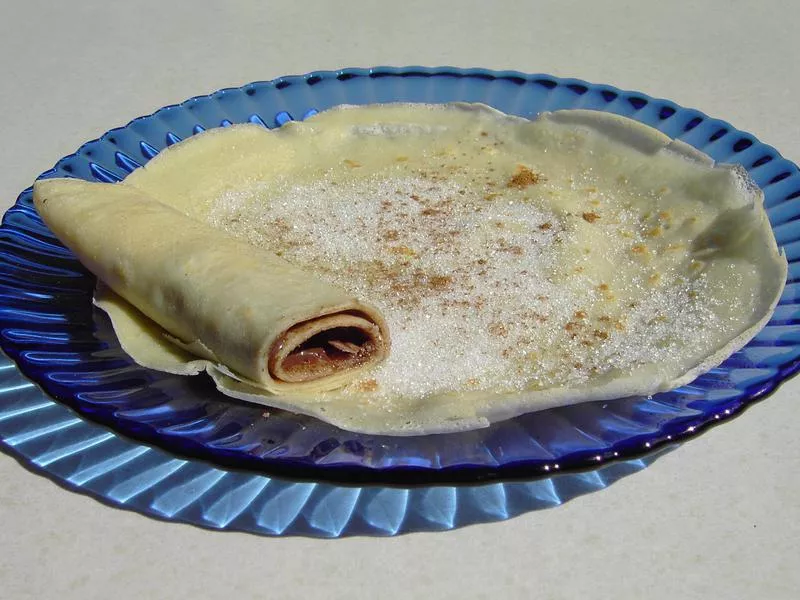If there's one thing we can all agree on, it's that there's no shortage of amazing food in Europe. The history of European fare is vast and interesting, and the continent's culinary scene is the main enticement for many who travel there.
Whether you've been to Europe or not, you've probably heard of or tasted some of the iconic dishes that hail from the region — think Italian gelato, French beef bourguignon or Spanish paella. But many other traditional European dishes have yet to gain such renown outside their native home.
Care to whet your appetite? From side dishes to desserts, the following foods are some of the most beloved European dishes that many Americans have not had the pleasure of trying ... yet.
Stamppot, Netherlands
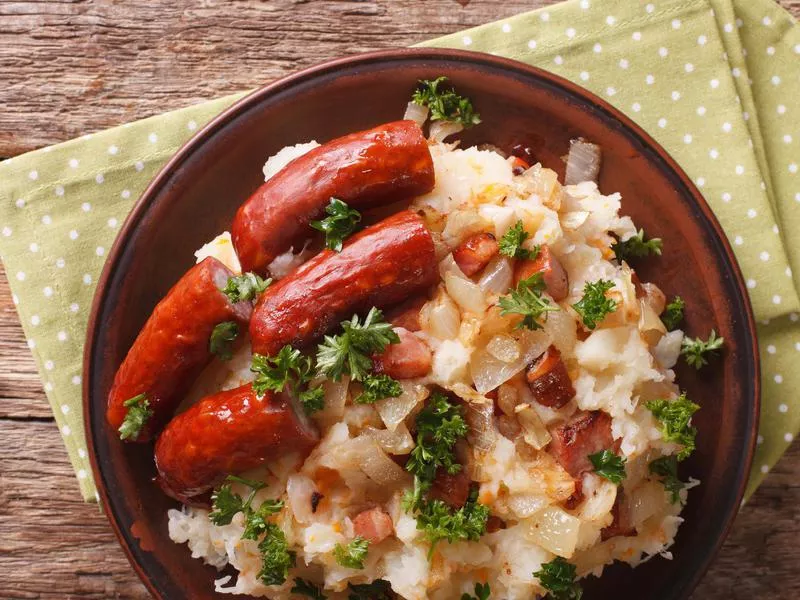
Getty Images
This popular Dutch winter dish originated in the 1600s, serving as an essential food during the harvest months because potatoes were plentiful and famished farmers could be filled up quickly and inexpensively.
Stamppot combines mashed potatoes with vegetables like kale or spinach, sometimes along with sauerkraut, and is usually served alongside sausage.
Like many staples on this list, stamppot is beautifully simple — a no-frills comfort food that satisfies every time.
Best place to eat stamppot: Amsterdam is chock-full of restaurants serving this classic dish.
Bigos, Poland
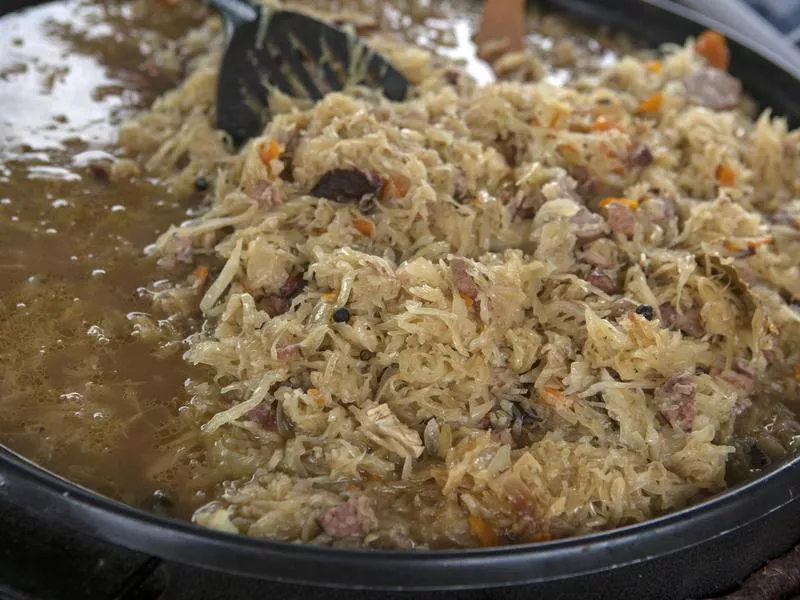
Getty Images
This Polish dish is said to have originated during Medieval times. It is also known as "Hunter's Stew," because hunters would bring home game and add it to stew to cook for hours.
One of the main ingredients is sauerkraut, originally used because it is high in vitamins and can survive winter. The other essential ingredient? Meat. Made with pork, beef, sausage, venison or smoked kielbasa, bigos is decidedly not a dish for vegetarians.
To make bigos, all of the ingredients are braised in red wine for hours. Common additions include tomato paste, mushrooms, caramelized onions, paprika, carrots, bay leaf and cabbage.
Bigos is a popular dish served on holidays and is usually enjoyed with a side of rye bread.
Best place to eat bigos: Any traditional Polish restaurant worth its salt, especially in the city of Krakow, should serve a fine version of bigos.
Potica, Slovenia

Getty Images
This festive dessert cake made headlines when, during a 2017 visit between Pope Francis and President Trump, the Pope turned to Melania, who’s Slovenian, and asked, “What do you give him to eat? Potica?”
The dish is made from dough and ground nuts, which are rolled into a log, baked, and filled with a sweet or savory filling of choice. The most common fills are honey, carob, bacon, walnuts, tarragon, poppy seeds and cottage cheese.
Potica is usually served during the holidays or for large celebrations, making it an important cultural touchstone as well.
Best place to eat potica: Combine excellent potica with a memorable experience by row-boating across a glacial lake to reach Slovenia’s Bled Island. The island is home to a castle, a church — and a bakery serving 50 flavors of this sweet treat.
Palatschinken, Austria
The French have crepes, and the Austrians have palatschinken. The latter is slightly thicker than the first, but both are very similar to breakfast pancakes. In Austria, palatschinken are typically served for lunch, but they make for a great breakfast or dessert dish as well.
Palatschinken are traditionally filled with apricot jam and then rolled; more adventurous types enjoy adding Nutella, bananas or maple syrup. And those with the ultimate sweet tooth top off palatschinken with whipped cream. (Is there any sweet not made better by the addition of whipped cream?)
Austrian restaurants typically serve palatschinken sweet, as is traditional. However, there are savory palatschinken too, which can be made with tomatoes, mozzarella and basil, or chopped up and added to soup. You do you.
Best place to eat palatschinken: Not surprisingly, foodie-central Vienna has some of the best spots in the country. Palatschinken is popular throughout Central and Eastern Europe as well, so you can also find it in countries including Hungary, Croatia and Bulgaria.
Banitsa, Bulgaria

Getty Images
Banitsa — a pastry traditionally made with phyllo dough and filled with eggs, white cheese or yogurt — bears a slight resemblance to strudel. It is baked in an oven and can be eaten hot or cold.
Sweet- and savory-tooth folks alike can find a version to love. Savory banitsas are made with ingredients like spinach or herbs, and are most often served for breakfast. Sweet versions, which can be made with ingredients like apple and cinnamon or pumpkin and sugar, are often enjoyed at Christmastime.
Sometimes, if the banitsa is served at a holiday celebration, it is filled with small charms or coins meant to bring good luck.
Best place to eat banitsa: Head to pretty much any bakery in Sofia, and you’ll find banitsa on the menu. You really can’t go wrong at any of them.
Rosolje, Estonia

UliU / Getty Images
The small coastal country of Estonia, located in northeastern Europe, is simultaneously one of the least densely populated countries in Europe and one of the most technologically advanced places in the world. Believe it or not, it’s where Skype was invented.
Also from Estonia? The popular dish of rosolje, a beautiful, pink-hued potato and beet salad that’s truly sublime.
Beets and potatoes are cut into bite-sized cubes and combined with a variety of ingredients, such as chopped onions, pickles, apples and hard-boiled eggs. It’s all topped off with a zesty dressing, made using a combination of mayonnaise, sour cream, mustard, horseradish and fresh herbs.
The colorful dish is often served with meat or sausages and tastes best when chilled.
Best place to eat rosolje: Rosolje is served in households across Estonia; if you want the good stuff, make friends with locals and join them for a feast in their home. If that sounds daunting, head to Tallinn, Estonia’s capital city set along the Baltic Sea, where some restaurant menus feature the dish.
Draniki, Belarus

YouTube
There are many varieties of potato pancakes in the world, but in Belarus, the draniki reign supreme. With their fluffy, floury texture, Belarusian potatoes taste fantastic in pancake form.
Draniki became popular back in the 19th century and were often served for breakfast with fresh sour cream. The traditional recipe uses potatoes, onions, salt and oil. Sometimes ingredients like eggs, flour or spices are added as well, but purists tend to balk at such additions.
The potato pancakes can also be stewed in ceramic pots with carrots, mushrooms, homemade sausages and cream, and then baked. Machanka, or pork stew, makes for an appealing complement to the dish.
Best place to eat draniki: In Minsk, the restaurant Kamyanitsa does traditional Belarusian food right, including making a mean draniki.
Jamon Iberico, Spain
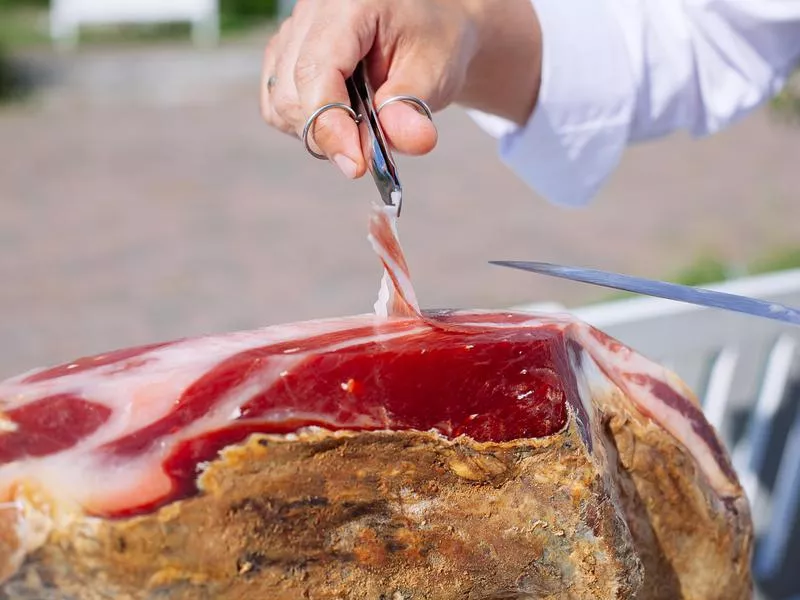
Getty Images
This delicacy is not produced anywhere else in the world, making it a true native specialty. The ham is made from the Iberico pig, whose veins of fat ensure a sweet, intense flavor following a long curing process.
Iberico pigs love acorns, eating so many that they gain about two pounds of fat each day. Once a pig has reached a certain weight, it's sacrificed during a ritual called “matanza,” which usually occurs when the whole family gathers together.
Once the hogs have been slaughtered, the hams are packed in sea salt and hung to dry in factories with open windows for a few weeks, allowing the mountain air to circulate around the meat. Iberico hams are then usually cured for two years or more.
Hey, nobody said perfection comes easy.
Best place to eat Jamon Iberico: At Dehesa de Solana, a farm in Extremadura, you can visit Iberian pigs before learning about the salting and curing process and, finally, trying the delicacy for yourself at an onsite tasting.
Stroopwafel, Netherlands
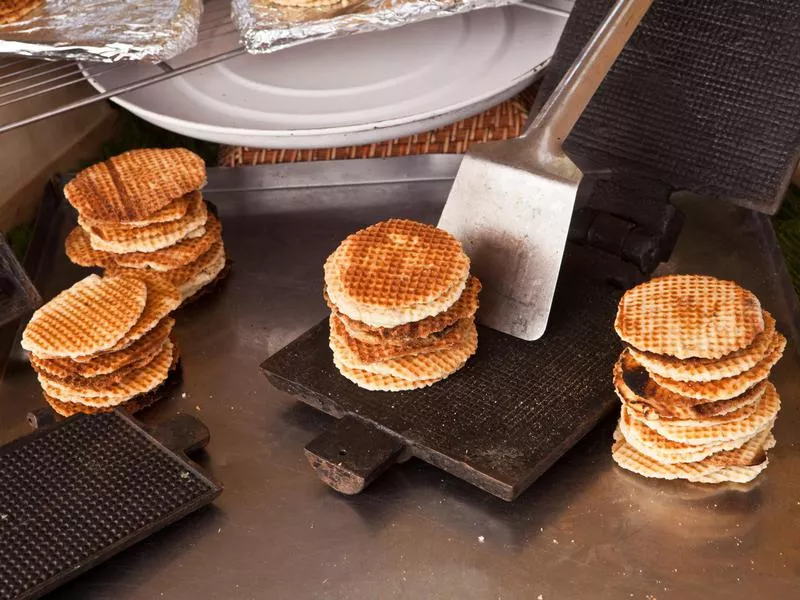
Getty Images
A stroopwafel is a cookie that’s been enjoyed in the Netherlands since the late 1700s, when a baker from Gouda, a city south of Amsterdam, made a waffle from leftover ingredients and filled it with syrup. (The name literally translates from Dutch to English as “syrup waffle.”)
At the time, this sweet treat was eaten mostly among the poor in Gouda, but since then, it’s become a staple throughout all of the Netherlands.
The standard way to make a stroopwafel is with two thin, crispy waffles that are filled and attached with a special syrup. Some recipes include hazelnuts or honey as well, for an extra sweet kick.
Best place to eat stroopwafel: Many local open-air markets in the Netherlands sell stroopwafels that have been crafted the traditional way; local grocery stores carry ones with more adventurous combinations. You'll also find stroopwafel at most bakeries in Gouda, each made from its own unique recipe.
Zagorski Strukli, Croatia
This traditional Croatian dish hails from the Zagorje region, and it's sometimes simply referred to as strukli.
It's made by filling phyllo dough with white cheese, like cottage cheese or ricotta, then rolling it into a pastry that’s boiled or baked. The result is similar to white lasagna or dumplings — and equally delicious.
Best place to eat strukli: La Struk in Zagreb only serves strukli. And locals and travelers alike say they do that one thing very right.
Smørrebrød, Denmark
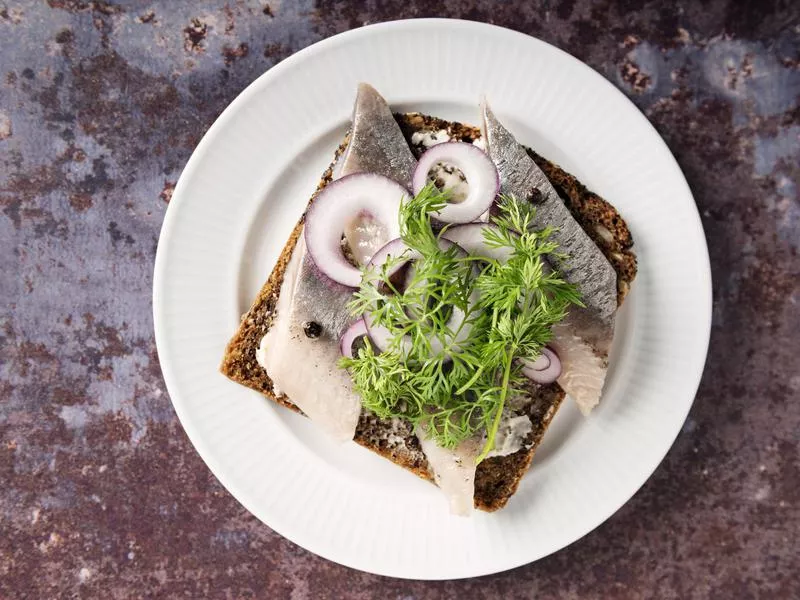
Getty Images
Made from a slice of dark Danish rye bread and toppings like cured fish, eggs, potatoes or pickled fish, smørrebrød is an open-faced sandwich that is considered an example of traditional Danish cuisine.
The dish began when farmers would stack dinner leftovers onto a “plate” made of bread to keep their energy high as they worked the fields. When they realized how delicious the bread became once it soaked up the flavorful juices of everything piled atop it, a specialty was born.
While smørrebrød is a traditional favorite, the national dish of Denmark is actually stegt flæsk — pieces of pork that are fried until they're crispy, served with boiled potatoes and a parsley sauce. Why try one classic Danish dish when you can try both?
Best place to eat smørrebrød: According to the Michelin guide, the best-of-the-best smørrebrød can be enjoyed at restaurants such as Amalie in Copenhagen.
Cevapi, The Balkans
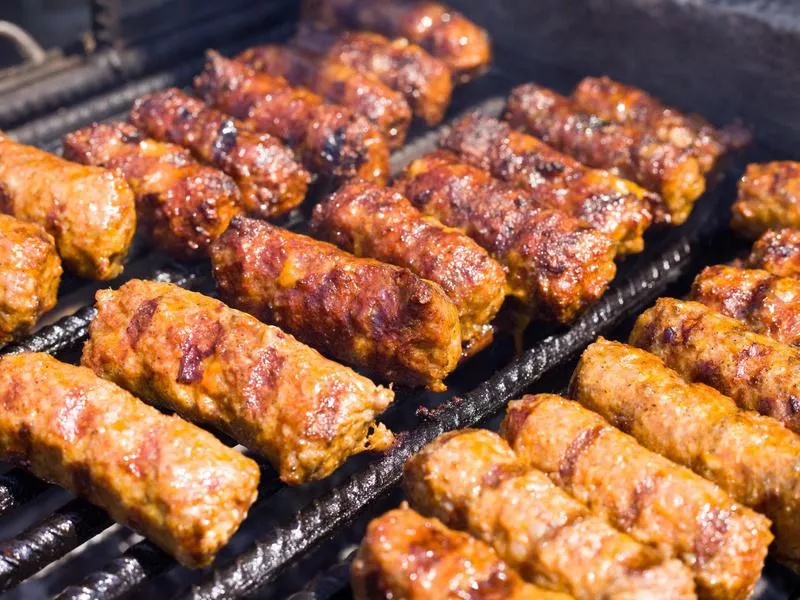
Getty Images
Cevapi is made from grilled skinless sausage, hand mixed and formed with a funnel. It is often served with other foods like flatbread, onions, sour cream or a roasted red-pepper spread called ajvar.
Around the Balkans, cevapi is mostly sold in family-owned restaurants. Because many recipes are passed down between generations of family, these restaurants keep the recipes top secret.
Best place to eat cevapi: Bosnia and Herzegovina's capital city of Sarajevo is an ideal place to try this Balkan fave.
Arancini, Italy
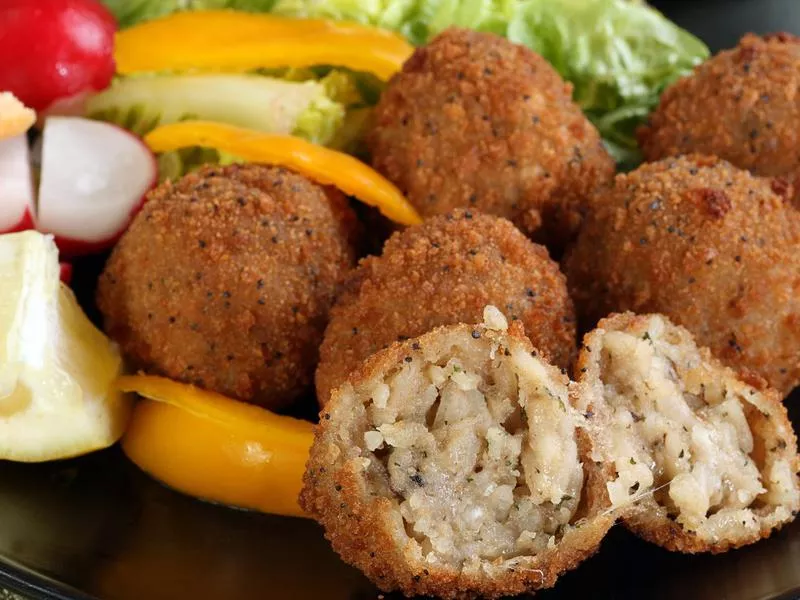
Getty Images
All that is required to make Sicilian fried rice balls, more commonly known as arancini, are rice and seasonings. They are usually stuffed with meat, tomatoes, mozzarella, mushrooms, peas or pistachios, then coated with bread crumbs and deep fried.
This Italian staple is not without (harmless) controversy: Different regions argue over whether the singular of arancini should be arancino (masculine) or arancina (feminine). Either way, this dish is just as good as Italy’s more famous specialties like pasta and gelato. (That's right, we said it.)
Best place to eat arancini: Arancini can be found across Italy, from food carts to food stores to some restaurants. Sicily, naturally, boasts some of the best arancini in the country.
Köttbullar, Sweden

Getty Images
To be fair, you likely know this dish by its Americanized name: Swedish meatballs. But if you want the authentic version — and to sound like an expert — make sure you ask for kottbullar. (Pro tip: It’s pronounced SHUT-boo-lahr.)
Not to be confused with Italian meatballs (blasphemy!), köttbullar are made with ground pork or beef, cream, onion and breadcrumbs, and then soaked in milk. Traditionally, they are served with gravy, mashed potatoes, lingonberry sauce and pickled cucumber — a spread not unlike what you find at American Thanksgiving.
Best place to eat köttbullar: Swedes will tell you their grandmas make the best meatballs. For those who don’t have a Swedish grandma on hand, the dish can also be found at excellent restaurants in Stockholm, Gothenburg and Malmö. And yes, IKEA (in Sweden and beyond) makes a surprisingly respectable version.
Moussaka, Greece

Getty Images
A classic Greek dish, moussaka is basically an eggplant casserole, featuring tomato meat sauce and a thick layer of béchamel sauce.
Some variations of moussaka recipes add additional ingredients like zucchini, squash or potatoes. The Egyptian version uses red sauce, while vegan versions utilize green peppers, tomatoes and walnuts.
The dish has Arab and Turikish roots — so why the French béchamel sauce? In 1920, France-educated chef Nikos Tselementes decided to rid Greek cuisine of Turkish influences; the sauce was meant to be a Europeanizing touch, and has since become a crucial element.
More so than perhaps any other dish on this list, moussaka has gained quick notoriety beyond Greece, including in the United States. So it’s possible this is one food you’re already aware of.
Best place to eat moussaka: Athens is the place to go for moussaka to die for. Klimitaria is a particular standout.

